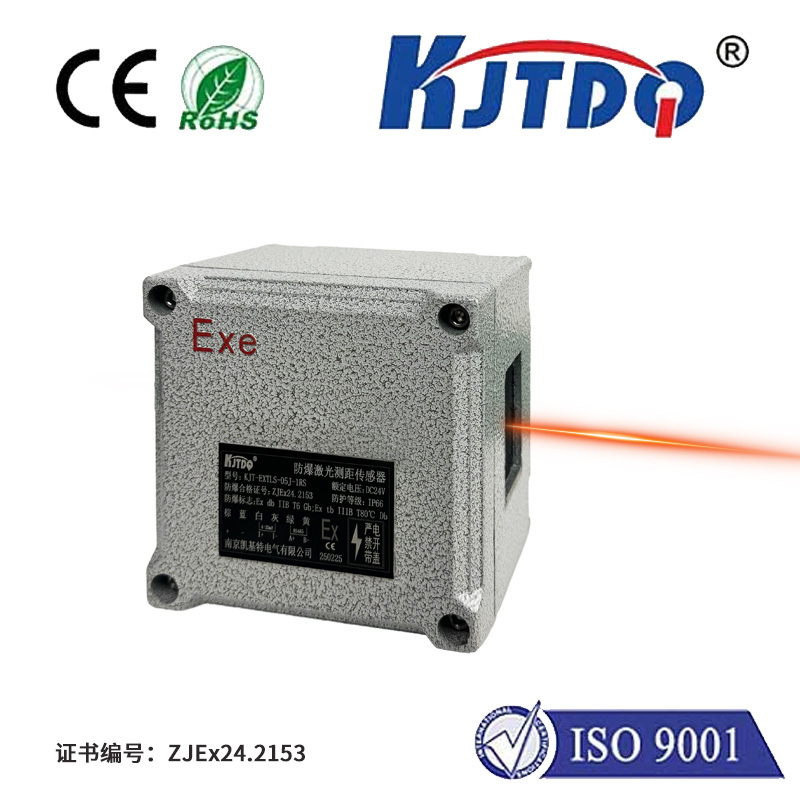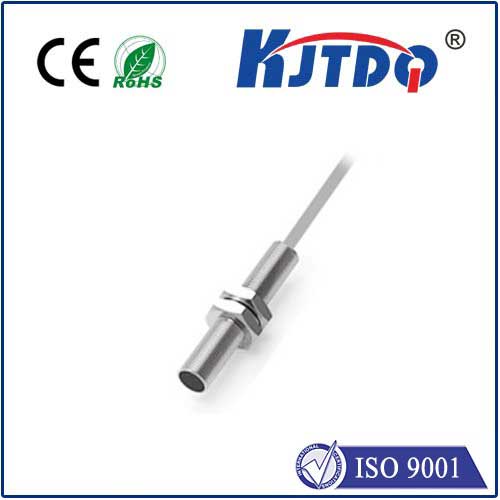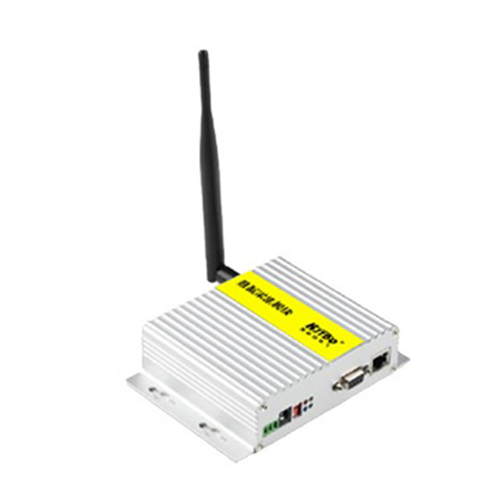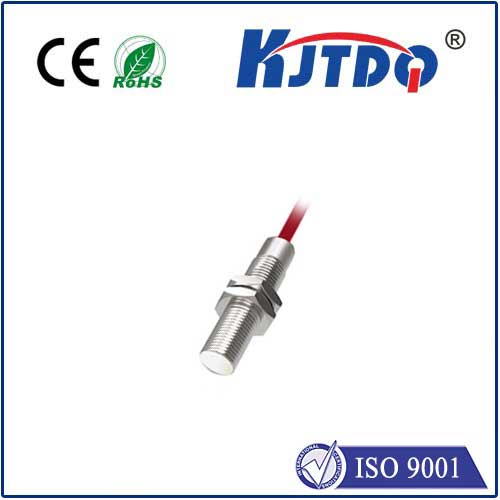magnetic proximity sensors
- time:2025-09-05 11:37:01
- Нажмите:0
The Unseen Detectives: Unlocking the Power of Magnetic Proximity Sensors
Imagine a factory floor where robotic arms move with precision, never colliding. Picture a car door that reliably signals when it’s securely latched, even coated in grime. Envision a smartphone that effortlessly knows when a flip cover is closed. The silent hero enabling these feats, often working unseen and untouched? Magnetic proximity sensors. These ingenious devices are fundamental to modern automation, robotics, and countless everyday gadgets, providing robust, non-contact detection through the invisible force of magnetism.
At their core, magnetic proximity sensors detect the presence or absence of a magnetic field, typically generated by a separate magnet. Unlike photoelectric sensors that need a clear line of sight or inductive sensors requiring metallic targets, magnetic sensors specifically react to magnetism. This unique principle grants them distinct advantages, particularly in challenging environments. When a magnetic field of sufficient strength enters the sensor’s detection range, it triggers an internal switch or generates an electronic signal, signaling the target object’s proximity – all without any physical contact. This non-contact sensing is key to their reliability and longevity.
Several key technologies fall under the umbrella of magnetic proximity sensors, each with its own strengths:
- Reed Switches: The granddads of the family. These are simple, sealed glass tubes containing two ferromagnetic reeds (thin metal strips) that act as contacts. A nearby magnetic field causes the reeds to flex and touch, closing the circuit. They are known for their simplicity, low power consumption (often requiring zero power themselves, just a signal circuit), and ability to switch relatively high currents. However, they can be susceptible to shock/vibration and have slower switching speeds.
- Hall Effect Sensors: These solid-state devices leverage the Hall Effect phenomenon. When a magnetic field is applied perpendicular to a current-carrying semiconductor, a voltage develops across it. This voltage change is detected and processed internally (often into a clean digital signal). Hall sensors offer faster response times, high switching frequencies, excellent repeatability, and resilience to shock and vibration. They can detect both the presence and polarity (North/South) of a magnet and provide analog output for position sensing. They typically require an external power supply.
- Magnetoresistive Sensors (MRE/AMR/GMR/TMR): These advanced sensors change their electrical resistance when exposed to a magnetic field. Different types (Anisotropic MRE, Giant MagnetoResistance, Tunnel MagnetoResistance) offer varying levels of sensitivity and precision. They are renowned for their exceptional sensitivity, ability to detect very weak magnetic fields, and high accuracy in measuring field strength and direction. This makes them ideal for demanding applications like rotary position sensing, current sensing, and compasses.
Why Choose Magnetic Proximity Sensing? The Compelling Advantages

The popularity of magnetic proximity sensors stems from a powerful combination of features:
- Unmatched Ruggedness: Sealed designs (especially Reed and Hall effect sensors) provide exceptional resistance to dirt, dust, oil, water (high IP ratings common), and even corrosive chemicals. They function flawlessly where optical sensors would fog or get blocked, and where inductive sensors might be affected by non-ferrous contaminants.
- Non-Contact Operation: Eliminating physical wear and tear significantly boosts sensor lifespan and reliability. There’s no friction, no moving parts (in Hall/MRE types), and no risk of damaging the target object.
- Performance in Harsh Environments: Capable of operating effectively across extremely wide temperature ranges, making them suitable for applications from freezing cold storage to hot engine compartments. Their immunity to environmental contaminants is a major plus.
- Simple Installation & Long Sensing Ranges (for Magnets): Installation is often straightforward, especially when a magnet can be easily mounted on the moving target. Some configurations can achieve relatively long detection distances compared to purely mechanically actuated switches.
- Target Flexibility: They detect magnets, not specific materials. This means the target itself can be made of plastic, non-magnetic metal, liquid, or even reside within a sealed container – the magnet is the key.
Where Magnetic Sensors Make Their Mark: Diverse Applications
The unique capabilities of magnetic proximity sensors make them indispensable across numerous sectors:
- Factory Automation & Robotics: Detecting cylinder piston position, verifying machine guards are closed, end-of-arm tooling presence, conveyor pallet location (via embedded magnets), and safety interlocks. Their robustness is critical here.
- Автомобильная промышленность: Used extensively for gearbox/transmission position sensing, brake/clutch pedal position, door/trunk/hood ajar detection, seat position adjustment, steering angle sensing (often using MREs), and BLDC motor commutation.
- Consumer Electronics: Detecting flip covers or cases on laptops, tablets, and smartphones. Activation of sleep/wake modes often relies on a hidden Hall effect sensor.
- Security Systems: Monitoring the status of doors and windows via concealed magnets and reed switches remains a reliable, low-power solution.
- Fluid Power Systems: Sensing spool position within hydraulic or pneumatic valves.
- Medical Devices: Where cleanliness and reliability are paramount, magnetic sensors are used in equipment requiring position feedback that avoids contamination.
- White Goods: Detecting washing machine drum position, dishwasher door closure, and refrigerator door status.
Selecting the Right Sensor: Key Considerations
Choosing the optimal magnetic proximity sensor involves evaluating several factors:
- Required Output Signal Type: Simple switch (Reed or Hall switch), analog voltage/current proportional to field strength/position, or digital logic level?
- Sensing Distance & Magnet Strength: Detection range is heavily dependent on the magnet used. You must match the sensor’s sensitivity to the magnet’s size, type (e.g., Neodymium, Ferrite), and orientation.
- Operating Environment: Temperature extremes, exposure to chemicals, moisture (IP rating required?), and potential interference from stray magnetic fields? Hall effect and MRE sensors typically handle EMI better than Reed switches.
- Switching Frequency/Speed: How fast do you need the sensor to respond to the magnet approaching or moving away? Hall sensors generally outperform Reed switches here.
- Power Constraints: Battery-powered applications may favor the ultra-low power or passive nature of Reed switches.
- Cost: Reed switches are generally the most economical, followed by basic Hall switches, with specialized analog Hall sensors and MREs commanding higher prices.
The Enduring Appeal of Magnetic Sensing
In a world reliant on reliable, silent automation and feedback, magnetic proximity sensors continue to prove their immense value. Their ability to perform flawlessly where others fail, their simple principle translating to outstanding durability, and their adaptability to diverse applications ensure their ongoing relevance. From the heavy vibration of an industrial press to the delicate inside of your smartphone, these unseen detectives harness the power of magnetism to provide crucial information, making our machines smarter, safer, and more efficient. When non-contact sensing in harsh or dirty environments is the challenge, the robust solution often lies in the invisible field detected by magnetic proximity technology.










